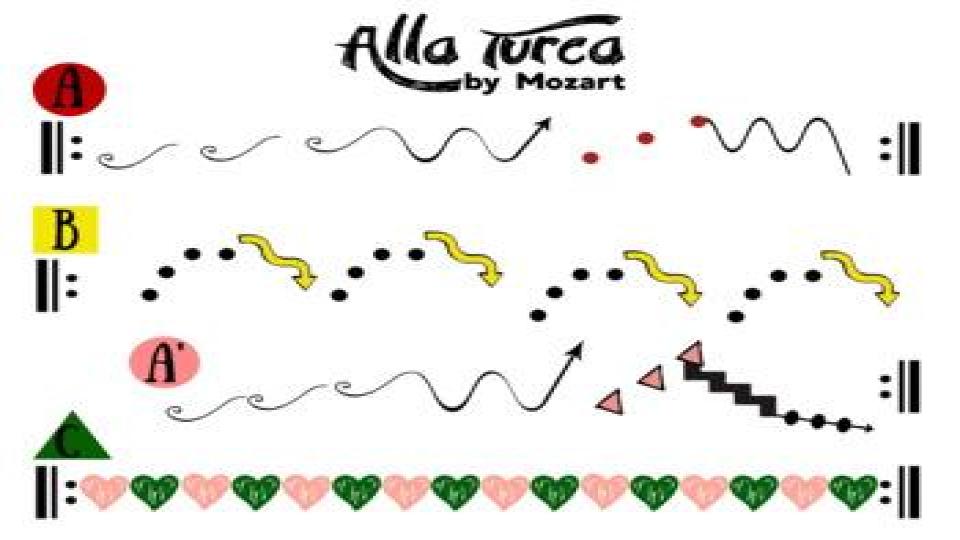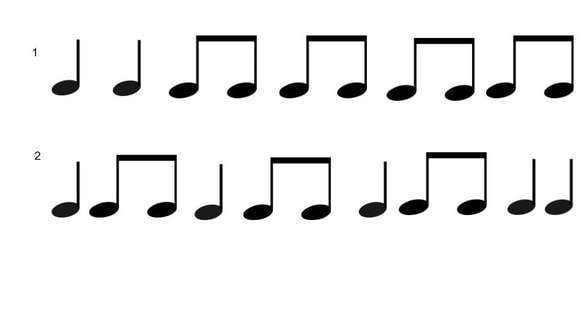DO!
Mozart’s full name is usually written “Wolfgang Amadeus Mozart,” but that’s not what Mozart called himself. His father baptized him Johannes Chrysotomus Wolfgangus Theophilus Mozart. He enjoyed decorating and twisting his various names into words like Wolfie, Wolfgango, Gangflow (that’s Wolfgang spelled backwards), Mozartini, Mozartus, and Mozarty. Remember, this guy loved to play around! But he virtually never used the name “Amadeus.” So where did “Amadeus” come from? The answer is easy if you know ancient Greek and Latin (as Mozart did): Amadeus is Latin for the Greek word Theophilus, which means “lover of God.” However, Mozart used variants of the Latin word, turning it into Amadeo, Amadè, or most often, Amadé.
El nombre completo de Mozart suele escribirse "Wolfgang Amadeus Mozart", pero
eso no es lo que Mozart se llama a sí mismo. Su padre lo bautizó Johannes
Chrysotomus Wolfgangus Theophilus Mozart. Le gustaba decorar y
torciendo sus varios nombres en palabras como Wolfie, Wolfgango, Gangflow
(eso es Wolfgang escrito al revés), Mozartini, Mozartus y Mozarty.
Recuerda, ¡a este chico le encantaba jugar! Pero virtualmente nunca usó el
nombre "Amadeus". Entonces, ¿de dónde vino “Amadeus”? La respuesta es
fácil si sabes griego antiguo y latín (como hizo Mozart): Amadeus es
Latín para la palabra griega Theophilus, que significa "amante de Dios".
Sin embargo, Mozart usó variantes de la palabra latina, convirtiéndola en Amadeo,
Amadè, o más a menudo, Amadé.
eso no es lo que Mozart se llama a sí mismo. Su padre lo bautizó Johannes
Chrysotomus Wolfgangus Theophilus Mozart. Le gustaba decorar y
torciendo sus varios nombres en palabras como Wolfie, Wolfgango, Gangflow
(eso es Wolfgang escrito al revés), Mozartini, Mozartus y Mozarty.
Recuerda, ¡a este chico le encantaba jugar! Pero virtualmente nunca usó el
nombre "Amadeus". Entonces, ¿de dónde vino “Amadeus”? La respuesta es
fácil si sabes griego antiguo y latín (como hizo Mozart): Amadeus es
Latín para la palabra griega Theophilus, que significa "amante de Dios".
Sin embargo, Mozart usó variantes de la palabra latina, convirtiéndola en Amadeo,
Amadè, o más a menudo, Amadé.
Ask an adult to help you try this... (Pídele a un adulto que te ayude a probar esto ...)
|
1. ¿Escribe tu nombre al revés e intenta decirlo en voz alta?
2. ¿Cuántas palabras puedes formar con su nombre? (Puede usar solo su nombre o nombre y apellido) 3. Mozart se dio a sí mismo al menos 3 apodos que conocemos. Usando su nombre real, intente crear 3 nuevos nombres para usted. Pruébelos con el nombre de un familiar o amigo. |
Tingalayo is a song that has an A B A pattern. Listen and see if you can hear it. Choose different body motions to show the A sections and the B section. |
Tingalayo es una canción que tiene un patrón A B A. Escuche y vea si puede oírlo. Elija diferentes movimientos corporales para mostrar las secciones A y la sección B.
|
Use the pictures (from the "THINK" page) to help you to try to create an ABA pattern on your own. Fold a blank piece of paper into 3 parts and label them A, B, and A on the bottom. Draw a shape or design or picture in each of the sections. Remember to follow the ABA pattern!
Utilice las imágenes (de la página "PIENSA") como ayuda para intentar crear un patrón ABA por su cuenta. Dobla una hoja de papel en blanco en 3 partes y etiquétalas como A, B y A en la parte inferior. Dibuja una forma o diseño o imagen en cada una de las secciones. ¡Recuerda seguir el patrón ABA!
Using the pictures (from the "THINK" page) see if you (and a family member) can create a picture that has hidden ABA Patterns in them!
Usando las imágenes (de la página "THINK"), vea si usted (y un miembro de su familia) pueden crear una imagen que tenga patrones ABA ocultos en ellas.
Listen to this song by Wolfgang Amadeus Mozart. It's called "Rondo Alla Turca" or "The Turkish March"
Escuche esta canción de Wolfgang Amadeus Mozart. Se llama "Rondo Alla Turca" o "La marcha turca".
Listen again to "Rondo Alla Turca" and follow the listening map below. Can you follow the path?
Escuche de nuevo "Rondo Alla Turca" y siga el mapa de escucha a continuación. ¿Puedes seguir el camino?
Remember the "Rondo Alla Turca" video with the "Ta's?" Go back to that video (in the THINK section) and see if you can come up with other ways to "catch" the Ta's. Try clapping, stamping, and jumping. What other ways did you come up with?
¿Recuerdas el video de "Rondo Alla Turca" con los "Ta's"? Regrese a ese video (en la sección PIENSA) y vea si puede encontrar otras formas de "atrapar" a los Ta's. Intente aplaudir, estampar y saltar. ¿Qué otras formas se te ocurrieron?
Using "TA" and "TA-TI" count the rhythms in this "Rondo Alla Turca" and then try the body percussion!
Usando "TA" y "TA-TI" cuenta los ritmos en este "Rondo Alla Turca" y luego prueba la percusión corporal.
Use "TA", "TA-TI", and "SHH" to create an 8 beat rhythm and then play it along with the video below.
Utilice "TA", "TA-TI" y "SHH" para crear un ritmo de 8 tiempos y luego reprodúzcalo junto con el video a continuación.
|
You can open and print the 8 Heart paper to help you.
(Puede abrir e imprimir el papel de 8 corazones para ayudarlo.) | ||||||
Now that you have written an 8 beat rhythm let's try a 16 beat rhythm! Use the pdf below to help you if you want. Remember we are still only using TA, TA-TI, and Shh. Play it with this new spooky accompaniment.
(Ahora que ha escrito un ritmo de 8 tiempos, ¡probemos con un ritmo de 16 tiempos! Use el pdf a continuación para ayudarlo si lo desea. Recuerde que todavía estamos usando TA, TA-TI y Shh. Tócala con este nuevo acompañamiento espeluznante.)
Babatunde Olatunji was born in the Village of Ajido in Southwestern Nigeria. His name means "father has returned" because he was named after his father who died 2 months before he was born. Babatunde realized when he was 12 years old that he did not want to follow in his fathers footsteps and become the chieftain of the village. Instead he came to the United States to go to school. He had grown up playing traditional African music on drums and he turned that into a career. He released 17 studio albums and he traveled all over performing. In addition he was an activist who fought against racism in the United States. Even before Rosa Parks became well known for refusing to sit in the back of a bus in Montgomery, Alabama in 1955 Mr. Olatunji had been protesting that practice throughout the south for three years. He is known as one of the first political activists in the United States, but he is better known for his music.
|
Babatunde Olatunji nació en la aldea de Ajido en el suroeste de Nigeria. Su nombre significa "padre ha regresado" porque fue nombrado en honor a su padre, que murió 2 meses antes de que él naciera. Babatunde se dio cuenta cuando tenía 12 años de que no quería seguir los pasos de su padre y convertirse en el cacique del pueblo. En cambio, vino a los Estados Unidos para ir a la escuela. Había crecido tocando música tradicional africana en la batería y lo convirtió en una carrera. Lanzó 17 álbumes de estudio y viajó por todas partes actuando. Además fue un activista que luchó contra el racismo en Estados Unidos. Incluso antes de que Rosa Parks se hiciera conocida por negarse a sentarse en la parte trasera de un autobús en Montgomery, Alabama en 1955, el Sr. Olatunji había estado protestando contra esa práctica en todo el sur durante tres años. Es conocido como uno de los primeros activistas políticos en los Estados Unidos, pero es más conocido por su música.
|
Try "playing" along with this video like we did in class...
MINDFUL MEDITATION
Listen to the music in the YouTube video and an adult to take you through the Mindful Meditation activity.
Escuche la música en el video de YouTube y un adulto que lo guiará a través de la actividad de meditación consciente
|
Mindful Meditation
This guided meditation brings a visual component to a very simple deep breathing exercise. You can do this standing or seated.
|
Meditación consciente
Esta meditación guiada aporta un componente visual a un ejercicio de respiración profunda muy simple. Puede hacerlo de pie o sentado. Relaje su cuerpo y comience a inhalar profundamente y exhalar lentamente por la nariz. Empiece a respirar lenta y profundamente para llenar su estómago de aire, como si estuviera tratando de inflar un globo grande. Expande tu barriga tanto como puedas. Deje salir lentamente el aire del globo (a través de la nariz) a medida que suelta el aire del vientre. Anime a sus hijos a sentir que todo su cuerpo se relaja cada vez que exhalan, cada vez que el globo libera aire lentamente. Incluso puede hacer un ruido de "silbido" para alentarlos a que disminuyan la exhalación aún más, "Como dejar salir aire del globo". Continúe durante varios minutos. SIGUIENTE Pídales que piensen en su color favorito e imaginen un globo gigante de ese color en su mente. Luego, pídales que inhalen lenta y profundamente por la nariz, llenando sus estómagos con aire como si trataran de inflar un globo gigante [su color favorito]. Como opción, también puede hacer que estiren los brazos abiertos y por encima de la cabeza para representar la expansión y el globo grande. Cuando su globo esté totalmente lleno, pídales que contengan la respiración en la parte superior, y luego usted puede "hacer estallar el globo" por ellos (con un gesto con el dedo hacia el vientre) y pueden caer mientras exhalan. Este probablemente provocará risas y conciencia de su respiración. |


